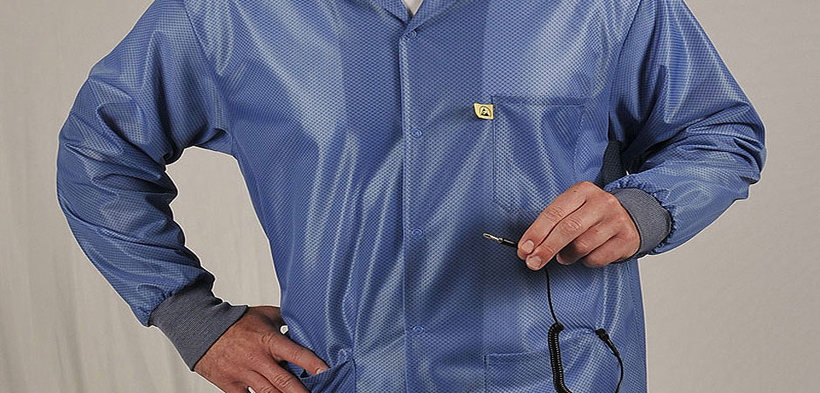What is ESD Workwear?26 May 2023 | Admin
How does electrostatic discharge work?Electrostatic discharge (ESD) can damage sensitive electrical equipment and cause a fire or explosion. Furthermore, fires, explosions, and equipment damage can result from even a tiny spark and release of electrostatic energy. Static energy can be invisible, silent, and something you wouldn't feel at all or may feel like a small electric shock. It can also be as significant as a lightning strike. Wherever there is a possibility of electrostatic phenomena or work involving flammable materials, including solvents and paints, it is essential to wear anti-static workwear designed to prevent electrostatic discharge. Who does electrostatic discharge affect?The industries, professions, and operations that may indicate that the wearing of anti-static workwear is prudent or vital include:
The science behind ESD workwearElectrostatic discharge occurs when there is an imbalance of a positive or negative charge on the surface of materials. This charge can build up through the motion of two surfaces rubbing together. It can be classically observed by rubbing a balloon on your clothing and moving it to your hair, which will stand on end and touch the balloon as the electrons move from one surface to the other. However, it is not just motion that can cause static build-up. Industries that use human-made materials, such as plastics, are also prone to electrostatic discharge. The use of dry air heating and air conditioning in enclosed spaces further raises the risks by creating a low-humidity environment, which increases the likelihood of static release. The fibers in the fabric of the anti-static workwear prevent the build-up of static charge. The fibers do this by allowing static to dissipate through the garment and into the ground, earth, or air. Protective clothingAs more and more industries, products, and services are delivered and created using technology and microchips, the need for anti-static PPE is increasing. Your anti-static workwear should be EN 1149 compliant. Workwear made from EN 1149-1 compliant fabric stops static charge build-up via conduction through a grid of carbon or metal fibers in the garment. Clothing made from EN 1149-3 compliant materials release electrostatic charge into the air. This process occurs quickly to ensure the electrostatic charge does not build up. Anti-static workwear often meets other standards, making them flame and heat retardant. To ensure complete safety, your workers may also need to wear not just antistatic overalls , but anti-static shoes and IEC 61340 protective gloves designed for working with electronic devices. Test methods for EN 1149EN 1149 is a family of standards and includes 5 primary test methods. Please note that the EN 1149-4 garment test is under development, but all the other test methods are described below. EN 1149-1Test method for measurement of surface resistivity. Surface resistance measures the conductivity between two points on the surface of a fabric. The lower the resistance the higher the conductivity, resulting in charge going to earth. EN 1149-2Test method for measurement of the electrical resistance through a material (vertical resistance). This is the level of conductivity when measured through the depth of a fabric. EN 1149-3Test methods for measurement of charge decay. Charge decay measures how long it takes for an electric current to dissipate. The quicker it dissipates, the higher the anti-static properties of the garment. EN 1149-5EN 1149-5 specifies the performance and design requirements to avoid static discharge for all electrostatic dissipative protective clothing as part of an entire earthed system, including shoes, clothing, and floor. The material meets the requirements. S U M M A R YAnti-static and ESD workwear is a must-have for people working around electricity or any of the areas listed previously. Without ESD workwear, sensitive electrical equipment could be damaged and cause a fire or explosion. In this blog, we have explained what electrostatic discharge is and how ESD workwear works as well as the safety standard (EN 1149) is tested to ensure garments can be classed as ESD workwear. If you are wanting to find some anti static clothes,
|
|
 Items: 0 Total: £0.00 |

















